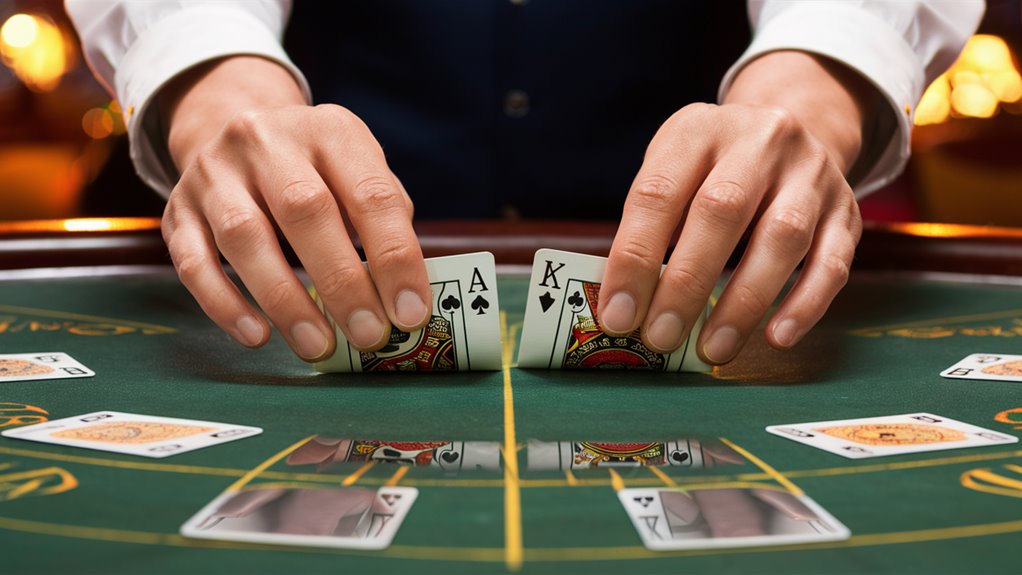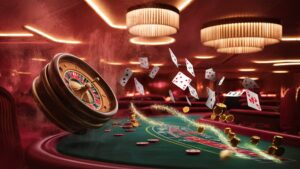
Glass & Grit Blackjack: Polishing Transparent Dealer Moves for Solid Splits
Professional Dealer Split Techniques Since October 2023
Using Split Hand Mechanics The Right Way
Glass & Grit’s methodology revolutionizes blackjack dealing with an exacting blend of mathematical precision and regimented delivery. Only this revolutionary process has been developed specifically for the management of split hands to provide the utmost levels of transparency and professionalism for dealers.
Fundamentals of Professional Handling
Strategic Positioning
Card stacking Locking in Your Edge With Diamond-Like Defense strategy to ensure great visibility
Ordered chip manipulation with purpose
Clarity techniques take split hand separation techniques
Movement Efficiency
Efficient dealing mechanics must be applied well to manifest through the following:
Compact motion patterns
Controlled card distribution
Strategic hand positioning
Advanced Split Hand Handling
Exercise your dealing rhythm by applying:
Clear hand signals
Systematic chip organization
Proper card spacing
The Glass & Grit Philosophy
The Glass & Grit Blackjack Strategy: Math and Discipline in Perfect Sync
Core Philosophy
Glass & Grit’s blackjack philosophy combines laser-precise mathematical analysis with an unbreakable mental mindset. By combining dealer analysis, card tracking, and anti-detection gameplay strategies, this all-encompassing method is a proven winner using open techniques and implementation methods.
Mathematical Foundation
The strategy analyzes every hand through two key lenses: statistical probability and psychological dynamics.
As players construct the mental fortitude required to remain steadfastly committed to strategy, they cultivate crystalline calculation abilities. This establishes a robust framework of mathematical precision undergirded Establishing a Regal Strategy in No-Limit Arenas by strategic discipline.
Three Essential Pillars
Precise Mathematical Modeling
Clear Decision-Making Protocols
Resilient Mindset Training
These components operate in a tightly synchronized manner, allowing for speedy decision-making based on sound probability assessments while keeping emotions in check.
The system employs sophisticated dealer tendency analysis, card distribution tracking, and optimal play execution.
The Key Techniques for Split Handling
Blackjack: Must-Know Techniques For Dealing with Splits
What Makes Split Mechanics So Special
The handling of splits is one of the main pillars of professional blackjack dealing.
These basics need to follow strict card separation with clear placements involved in keeping the integrity of the game.
Splits must be made with clear, deliberate movements that provide visibility to all hands.
How to Produce the Execution Steps for a Professional Split?
- Initial Card Separation
- Right Hand Moves Related Cards apart
- Perform a smooth sliding motion
- Add cards spaced evenly at specified locations
It is important to achieve a perfect 45-degree angle between the split cards.
Multiple Split Management
Splitting hands have Integrating Disparate Clues Into Unified Wagers a clear separation in the betting process from their precedents, establishing that the splits handle the left going hands and the right hands handle right to left.
Key elements include:
Split Amounts in Short Text− Verbal confirmation
Well Defined Hands Positioning For Every Single New Bet
Approach when dealing to multiple hands
Clear difference between resplit positions
Enhanced Packet Separation Protocol
Ensure professional consistency by employing:
Timing of actions must be precise
Transparent communication with players
Organized hand progression
Frame request body for betting validation

Common Split Dealing Mistakes
The Must-Dos for Split Dealing in Blackjack
Mistakes Dealers Make when Dealing Split Hands
If you are new to the game, there are some big mistakes that as a new “dealer” you can make when handling split hands leading to both a slower game and a lack of table integrity.
There are three extremely common fundamental mistakes that can affect the dealer performance, they are improper card placement on the table, faulty chip movement, and a failed split hand progression.
Card Placement and Table Management
Dealers are trained to place split cards just so – placing the second card some exact distance from the attached pair maintains visibility of the hands while also preventing minor table clutter.
If the player wishes to split their hand (assuming they had two matching cards), it should be treated as separate but still close enough together as to not create multiple “betting areas.”
Efficient Chip Handling
Managing chips in split hands is just as important as in any other hands.
Degenerate brick-and-mortar players parse split bets confidently and push on chips assertively, never pausing to double-check, because it grinds game speed to a halt.
A big part of this flow comes from clean chip movements and accurate initial assessments — doing so keeps the game at a nice pace.
Split Hand Progression
Professional dealing requires systematic progression through split hands.
Each split hand must be completed before moving to the next.
Using simple descriptions like “working first split hand” or “moving to second split hand” preserves the clarity of the game and keeps the player on track with what they need to do.
Fast Without Losing Accuracy
Precision Demands Speed In Dealing Games In The Casino
The Skill of Balancing Speed with Accuracy
Master proper dealing techniques 메이저사이트 that balance speed and accuracy. You have a natural flow formed from smooth, consistent “quickish” movements that maximized speed with accuracy.
Focus on dialing in basic mechanics at a slow pace then gradually building speed.
Key Elements of Dealing Like a Pro
To gain maximum efficiency, consider analyzing each dealing motion in more granular details to arrive at core components.
Use Compact Movement and Remove Excess Split Deal Flourishes
Reconfigure seating orientation to ensure cards fall in front in a straight line to the betting spot for a full table, and optimize handle height for track length as much as possible.
Trainable Tasks With Inputs, Outputs, and Actions
Develop accurate muscle memory using focused practice drills.
Practice smooth transitions between the various dealing positions to hit smooth shuffle-to-deal transitions.
Track rates of accuracy over time – be slow when accuracy dips below par.
The art of professional dealing insists on accuracy above velocity, focusing first on bespoking our dirty code and then on increasing velocity.
Building Muscle Memory
Developing Muscle Memory for Dealing Cards
Core Dealing Fundamentals
Standard movements must be practiced until they become reflex — automatic, a process that involves systematic training. To really develop strong muscle memory, you have to find these complex dealing patterns, break them down into small, repeatable actions, and do them next to each other until they become second nature.
Mastering Basic Mechanics
Begin building the foundations with perfecting the card pull. This daily practice with 1,000 identical Firefly Flicks draws from the shoe creates consistent muscle patterns.
One key in pitch mechanics is to keep the wrist in a strong 45-degree position while delivering cards to each respective player position. Short practice sessions — about 30 minutes of focused pitch consistency — build muscle memory that lasts.

